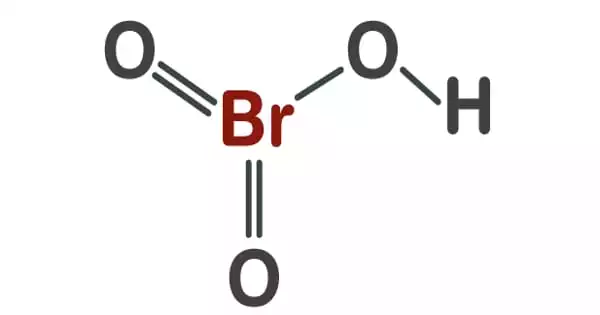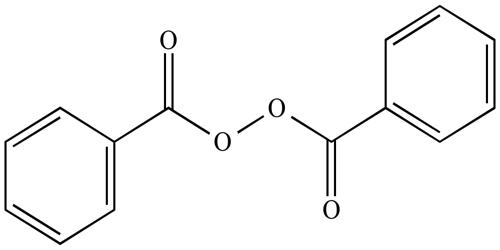Credit Approval Process
Credit approval is the process a business or an individual must go through to become eligible for a loan or to pay for goods and services over an extended period. It also refers to the process businesses or lenders undertake when evaluating a request for credit. Granting credit approval depends on the willingness of the creditor to lend money in the current economy and that same lender’s assessment of the ability and willingness of the borrower to return the money or pay for the goods obtained—plus interest—in a timely fashion. Typically, small businesses must seek credit approval to obtain funds from lenders, investors, and vendors, and also grant credit approval to their customers.
All proposals for loan and other facilities should ordinarily be initiated from the branches.
The loan proposals wherever necessary must be sent to Head Office in proper Credit Line Proposal (CLP) duly supported by required information and documentary evidence. Industrial loan proposals must accompany properly conducted feasibility report. For working capital to industrial clients, full work-sheet showing working Capital requirement of the industry must accompany the CLP.
Branches shall send proposal to Head Office within lending ceiling of the branch, which is determined by its deposit position and manpower capacity. In exceptional cases and with prior permission from Head Office, proposals beyond the limit can be sent to Head Office. Branches must ensure that only viable proposals are sent to the Head Office. All loan proposals must be discussed at Branch Credit Committee (BCC) before the same are forwarded to Head Office and shall bear signatures of all members of BCC. Before sending any proposals for any facility following additional conditions must be fully satisfied by the branches. Head Office Credit Committee (HOCC) must also see that these conditions have been fulfilled.
No objection of the concerned bank/banks should be obtained if the borrower is in debt with them.
Report from Credit Information Bureau (CIB) of Bangladesh Bank that the borrowers or their allied accounts are not having any sticky loans with other banks should accompany the proposal.
Copies of statements of all types of accounts viz. C.C. (Hypo), C.C. (Pledge), PAD, LIM & Current Account etc. maintained by the borrowers shall accompany CLP and will be critically examined to determine the behaviour of the accounts and volume of business to justify the amount of the proposed loan. This will be required for new accounts as well as old accounts for sanction and also for renewal/enhancement. Financial statements viz. Balance Sheet, Fund Flow Statements, Cash Flow Statements, Trading Income Statements should be obtained and sent along with necessary ratio analysis to show improvement or deterioration in the financial position of the customers in comparison with the past performance. Basic areas of analysis should cover –
– Asset-equity Ratio
– Debt-equity Ratio
– Fixed Asset to Equity Ratio
– Stock-Working Capital Ratio
– Inventory to Sales Ratio
– Debtors Turnover Ratio
– Creditors Turnover Ratio
– Retained Profit to Net Profit Ratio
– Current Ratio
– Quick Ratio
– Gross Profit to Sale
– Net Profit to Net Capital Fund
The following diagram illustrates the approval process:
Credit Risk Grading:
Credit risk grading is an important tool for credit risk management as it helps the Banks & financial institutions to understand various dimensions of risk involved in different credit transactions. The aggregation of such grading across the borrowers, activities and the lines of business can provide better assessment of the quality of credit portfolio of a bank or a branch. The credit risk grading system is vital to take decisions both at the pre-sanction stage as well as post-sanction stage.
At the pre-sanction stage, credit grading helps the sanctioning authority to decide whether to lend or not to lend, what should be the loan price, what should be the extent of exposure, what should be the appropriate credit facility, what are the various facilities, what are the various risk mitigation tools to put a cap on the risk level.
At the post-sanction stage, the bank can decide about the depth of the review or renewal, frequency of review, periodicity of the grading, and other precautions to be taken.
Having considered the significance of credit risk grading, it becomes imperative for the banking system to carefully develop a credit risk-grading model, which meets the objective outlined above.
The Lending Risk Analysis (LRA) manual introduced in 1993 by the Bangladesh Bank has been in practice for mandatory use by the Banks & financial institutions for loan size of BDT 1.00 crore and above. However, the LRA manual suffers from a lot of subjectivity, sometimes creating confusion to the lending Bankers in terms of selection of credit proposals on the basis of risk exposure. Meanwhile, in 2004 end Bangladesh Bank provided guidelines for credit risk management of Banks wherein it recommended, interalia, the introduction of Risk Grade Score Card for risk assessment of credit proposals.
Since the two credit risk models are presently in vogue, the Governing Board of Bangladesh Institute of Bank Management (BIBM) under the chairmanship of the Governor, Bangladesh Bank decided that an integrated Credit Risk Grading Model be developed incorporating the significant features of the above mentioned models with a view to render a need based simplified and user friendly model for application by the Banks and financial institutions in processing credit decisions and evaluating the magnitude of risk involved therein.
Bangladesh Bank expects all commercial banks to have a well-defined credit risk management system, which delivers accurate and timely risk grading. This manual describes the elements of an effective internal process for grading credit risk. It also provides a comprehensive, but generic discussion of the objectives and general characteristics of effective credit risk grading system. In practice, a bank’s credit risk grading system should reflect the complexity of its lending activities and the overall level of risk involved.
Definition of Credit Risk Grading (CRG)
- The Credit Risk Grading (CRG) is a collective definition based on the pre-specified scale and reflects the underlying credit-risk for a given exposure.
- A Credit Risk Grading deploys a number/alphabet/symbol as a primary summary indicator of risks associated with a credit exposure.
- Credit Risk Grading is the basic module for developing a Credit Risk Management system.
Functions of Credit Risk Grading
Well-managed credit risk grading systems promote bank safety and soundness by facilitating informed decision-making. Grading systems measure credit risk and differentiate individual credits and groups of credits by the risk they pose. This allows bank management and examiners to monitor changes and trends in risk levels. The process also allows bank management to manage risk to optimize returns.
Use of Credit Risk Grading
- The Credit Risk Grading matrix allows application of uniform standards to credits to ensure a common standardized approach to assess the quality of individual obligor, credit portfolio of a unit, line of business, the branch or the Bank as a whole.
- As evident, the CRG outputs would be relevant for individual credit selection, wherein either a borrower or a particular exposure/facility is rated. The other decisions would be related to pricing (credit-spread) and specific features of the credit facility. These would largely constitute obligor level analysis.
- Risk grading would also be relevant for surveillance and monitoring, internal MIS and assessing the aggregate risk profile of a Bank. It is also relevant for portfolio level analysis.
CREDIT RISK GRADING SCORE SHEET
| Reference No.: |
| Date: | |||
| Borrower | |||||
| Group Name (if any) | Aggregate Score: | ||||
| Branch: | |||||
| Industry/Sector | Risk Grading: | ||||
| Date of Financials | |||||
| Completed by | |||||
| Approved by | |||||
Number | Grading | Short | Score |
| |
1 | Superior | SUP | Fully cash secured, secured by government guarantee/international bank guarantee | ||
2 | Good | GD | 85+ | ||
3 | Acceptable | ACCPT | 75-84 | ||
4 | Marginal/Watchlist | MG/WL | 65-74 | ||
5 | Special Mention | SM | 55-64 | ||
6 | Substandard | SS | 45-54 | ||
7 | Doubtful | DF | 35-44 | ||
8 | Bad/Loss | BL | <35 | ||
Criteria Weight | Parameter | Score | Actual Parameter | Score Obtained | |
A. Financial Risk 50% | |||||
1. Leverage: (15%) | Less than 0.25× | 15 | 0.53 |
| |
Debt Equity Ratio (×) – Times | 0.26× to 0.35 x | 14 |
| ||
Total Liabilities to Tangible Net worth | 0.36× to 0.50 x | 13 |
| ||
0.51× to 0.75 x | 12 |
| |||
All calculations should be based on | 0.76× to 1.25 x | 11 |
| ||
Annual financial statements of the | 1.26× to 2.00 x | 10 |
| ||
Borrower (audited preferred) | 2.01× to 2.50 x | 8 |
| ||
2.51× to 2.75 x | 7 |
| |||
More than 2.75× | 0 |
| |||
2. Liquidity: (15%) | Greater than 2.74× | 15 | 54.00 |
| |
Current Ratio (×) -Times | 2.50× to 2.74 x | 14 |
| ||
Current Assets to Current Liabilities | 2.00× to 2.49 x | 13 |
| ||
1.50× to 1.99 x | 12 |
| |||
1.10× to 1.49 x | 11 |
| |||
0.90× to 1.09 x | 10 |
| |||
0.80× to 0.89 x | 8 |
| |||
0.70× to 0.79 x | 7 |
| |||
Less than 0.70× | 0 |
| |||
3. Profitability: (15%) | Greater than 25% | 15 | 78.00% |
| |
Operating Profit Margin (%) | 20% to 24% | 14 |
| ||
(Operating Profit/Sales) X 100 | 15% to 19% | 13 |
| ||
Criteria Weight | Parameter | Score | Actual Parameter | Score Obtained |
A. Financial Risk 50% | ||||
10% to 14% | 12 |
| ||
7% to 9% | 10 |
| ||
4% to 6% | 9 |
| ||
1% to 3% | 7 |
| ||
Less than 1% | 0 |
| ||
4. Coverage: (5%) |
| |||
Interest Coverage Ratio (×) – Times |
| |||
Earning before interest & tax (EBIT) | More than 2.00× | 5 | 10.00 |
|
Interest on debt | More than 1.51× Less than 2.00× | 4 |
| |
More than 1.25× Less than 1.50× | 3 |
| ||
More than 1.00× Less than 1.24× | 2 |
| ||
Less than 1.00× | 0 |
| ||
Total Score- Financial Risk |
| 50 |
|
|
B. Business/ Industry Risk 18% |
| |||
1. Size of Business (in BDT crore) | > 60.00 | 5 | 75.00 |
|
30.00 – 59.99 | 4 |
| ||
The size of the borrower’s business | 10.00 – 29.99 | 3 |
| |
measured by the most recent year’s | 5.00 – 9.99 | 2 |
| |
total sales. Preferably audited numbers. | 2.50 – 4.99 | 1 |
| |
< 2.50 | 0 |
| ||
2. Age of Business | > 10 Years | 3 | 10 |
|
> 5 – 10 Years | 2 |
| ||
The number of years the borrower | 2 – 5 Years | 1 |
| |
engaged in the primary line of business | < 2 Years | 0 |
| |
3. Business Outlook | Favorable | 3 | Favorable |
|
Critical assessment of medium term | Stable | 2 |
| |
prospects of industry, market share | Slightly Uncertain | 1 |
| |
and economic factors. | Cause for Concern | 0 |
| |
4. Industry Growth | Strong (10%+) | 3 | No Growth (<1%) |
|
Good (>5% – 10%) | 2 |
| ||
Moderate (1%-5%) | 1 |
| ||
No Growth (<1%) | 0 |
| ||
5. Market Competition | Dominant Player | 2 | Dominant Player |
|
Moderately Competitive | 1 |
| ||
Highly Competitive | 0 |
| ||
6. Entry/Exit Barriers | Difficult | 2 | Difficult |
|
Average | 1 |
| ||
Easy | 0 |
| ||
Total Score- Business/Industry Risk |
| 18 |
|
|
C. Management Risk 12% |
| |||
1. Experience | More than 10 years in the related line of business | 5 | More than 10 years in the related line of business |
|
Quality of management based on total | 5–10 years in the related line of business | 3 |
| |
# of years of experience of the senior | 1–5 years in the related line of business | 2 |
| |
Management in the Industry. | No experience | 0 |
| |
2. Second Line/ Succession | Ready Succession | 4 | Succession within 2-3 years |
|
Succession within 1-2 years | 3 |
| ||
Succession within 2-3 years | 2 |
| ||
Succession in question | 0 |
| ||
3. Team Work | Very Good | 3 | Very Good |
|
Moderate | 2 |
| ||
Poor | 1 |
| ||
Regular Conflict | 0 |
| ||
Total Score- Management Risk |
| 12 |
|
|
D. Security Risk 10% |
| |||
1. Security Coverage (Primary) | Fully Pledged facilities/substantially cash covered / Reg. Mortg. for HBL | 4 | Registered Hypothecation (1st Charge/1st Pari passu Charge) |
|
Registered Hypothecation (1st Charge/1st Pari passu Charge) | 3 |
| ||
2nd charge/Inferior charge | 2 |
| ||
Simple hypothecation/Negative lien on assets | 1 |
| ||
No security | 0 |
| ||
2. Collateral Coverage (Property Location) | Registered Mortgage on Municipal corporation/Prime Area property | 4 | Registered Mortgage on Pourashava/Semi-Urban area property |
|
Registered Mortgage on Pourashava/Semi-Urban area property | 3 |
| ||
Equitable Mortgage or No property but Plant and Machinery as collateral | 2 |
| ||
Negative lien on collateral | 1 |
| ||
No collateral | 0 |
| ||
3. Support (Guarantee) | Personal Guarantee with high net worth or Strong Corporate Guarantee | 2 | Personal Guarantee with high net worth or Strong Corporate Guarantee |
|
Personal Guarantees or Corporate Guarantee with average financial strength | 1 |
| ||
No support/guarantee | 0 |
| ||
Total Score- Security Risk |
| 10 |
|
|
E. Relationship Risk 10% |
| |||
1. Account Conduct | More than 3 years Accounts with faultless record | 5 | More than 3 years Accounts with faultless record |
|
Less than 3 years Accounts with faultless record | 4 |
| ||
Accounts having satisfactory dealings with some late payments. | 2 |
| ||
Frequent Past dues & Irregular dealings in account | 0 |
| ||
2. Utilization of Limit | More than 60% | 2 | 65.00% |
|
(Actual/projection) | 40% – 60% | 1 |
| |
Less than 40% | 0 |
| ||
3. Compliance of Covenants / | Full Compliance | 2 | Full Compliance |
|
Conditions | Some Non-Compliance | 1 |
| |
No Compliance | 0 |
| ||
4. Personal Deposits | Personal accounts of the key business Sponsors/ Principals are maintained in the bank, with significant deposits | 1 | Personal accounts of the key business Sponsors/ Principals are maintained in the bank, with significant deposits |
|
No depository relationship | 0 |
| ||
Total Score- Relationship Risk |
| 10 |
|
|
Grand Total – All Risk |
| 100 |
|
|
Number and Short Name of Grades Used in the CRG
- The proposed CRG scale consists of 8 categories with Short names and Numbers are provided as follows:
| GRADING | SHORT NAME | NUMBER |
| Superior | SUP | 1 |
| Good | GD | 2 |
| Acceptable | ACCPT | 3 |
| Marginal/Watch List | MG/WL | 4 |
| Special Mention | SM | 5 |
| Sub standard | SS | 6 |
| Doubtful | DF | 7 |
| Bad & Loss | BL | 8 |
Credit Risk Grading Definitions
A clear definition of the different categories of Credit Risk Grading is given as follows:
Superior – (SUP) – 1
- Credit facilities, which are fully secured i.e. fully cash covered.
- Credit facilities fully covered by government guarantee.
- Credit facilities fully covered by the guarantee of a top tier international Bank.
Good – (GD) – 2
- Strong repayment capacity of the borrower
- The borrower has excellent liquidity and low leverage.
- The company demonstrates consistently strong earnings and cash flow.
- Borrower has well established, strong market share.
- Very good management skill & expertise.
- All security documentation should be in place.
- Credit facilities fully covered by the guarantee of a top tier local Bank.
- Aggregate Score of 85 or greater based on the Risk Grade Score Sheet
Acceptable – (ACCPT) – 3
- These borrowers are not as strong as GOOD Grade borrowers, but still demonstrate consistent earnings, cash flow and have a good track record.
- Borrowers have adequate liquidity, cash flow and earnings.
- Credit in this grade would normally be secured by acceptable collateral (1st charge over inventory / receivables / equipment / property).
- Acceptable management
- Acceptable parent/sister company guarantee
- Aggregate Score of 75-84 based on the Risk Grade Score Sheet
Marginal/Watch List – (MG/WL) – 4
- This grade warrants greater attention due to conditions affecting the borrower, the industry or the economic environment.
- These borrowers have an above average risk due to strained liquidity, higher than normal leverage, thin cash flow and/or
- inconsistent earnings.
- Weaker business credit & early warning signals of emerging business credit detected.
- The borrower incurs a loss
- Loan repayments routinely fall past due
- Account conduct is poor, or other untoward factors are present.
- Credit requires attention
- Aggregate Score of 65-74 based on the Risk Grade Score Sheet
Special Mention – (SM) – 5
- This grade has potential weaknesses that deserve management’s close attention. If left uncorrected, these weaknesses may result in a deterioration of the repayment prospects of the borrower.
- Severe management problems exist.
- Facilities should be downgraded to this grade if sustained deterioration in financial condition is noted (consecutive losses, negative net worth, excessive leverage),
- An Aggregate Score of 55-64 based on the Risk Grade Score Sheet.
Substandard – (SS) – 6
- Financial condition is weak and capacity or inclination to repay is in doubt.
- These weaknesses jeopardize the full settlement of loans.
- Bangladesh Bank criteria for sub-standard credit shall apply.
- An Aggregate Score of 45-54 based on the Risk Grade Score Sheet.
Doubtful – (DF) – 7
- Full repayment of principal and interest is unlikely and the possibility of loss is extremely high.
- However, due to specifically identifiable pending factors, such as litigation, liquidation procedures or capital injection, the asset is not yet classified as Bad & Loss.
- Bangladesh Bank criteria for doubtful credit shall apply.
- An Aggregate Score of 35-44 based on the Risk Grade Score Sheet.
Bad & Loss – (BL) – 8
Credit of this grade has long outstanding with no progress in obtaining repayment or on the verge of wind up/liquidation.
Prospect of recovery is poor and legal options have been pursued.
Proceeds expected from the liquidation or realization of security may be awaited. The continuance of the loan as a bankable asset is not warranted, and the anticipated loss should have been provided for.
This classification reflects that it is not practical or desirable to defer writing off this basically valueless asset even though partial recovery may be affected in the future. Bangladesh Bank guidelines for timely write off of bad loans must be adhered to. Legal procedures/suit initiated.
Bangladesh Bank criteria for bad & loss credit shall apply.
An Aggregate Score of less than 35 based on the Risk Grade Score Sheet.
Head Office shall sanction or place proposals to the Board/Committee for sanction of loans only if it meets the criteria under credit policy. Loans shall not be approved and shall be recalled if:
The lending limit of the bank exceeding 80 % of deposits
– Sectoral limit is exhausted or exceeded.
– Collateral value is less than two times of the proposed loan with exception of Cash Credit in pledge or security is in the form of financial instruments.
– Debt Service Ratio is less than 2-3 times, Rate of Return is less than 10%, pay back period exceeds 5 years in case of Term Loans and current ratio is less than 2 times.
– Sales turnover is less than 4 times of the loan asked for and turnover in the account was less than 3 times of the loan.
– Equity is less than the limit prescribed from time to time for various items.
– Cash flow statement indicates insufficient liquidity due to low turnover, market debt and over trading.
– Cash flow statement, which is to be obtained quarterly in case of Cash Credit of Tk.15 lac and above, indicates deterioration in the financial position through diversion of fund for acquisition of assets not beneficial to the company/industry.
– Finally, letters issued from Head Office sanctioning/approving loans and advances must clearly state in detail all the terms and conditions so that there remains no confusion or difficulty in implementation of the project or operation of loan account. The sanction letters shall state :
– Limit of loans/advances/facilities
– Nature of loans/advances
– Validity period of limit for utilization
– Rate of interest/commission/fees on loans/advances/ facilities
– Margins to be retained
– Details of securities to be obtained against the loan/advance/ facilities and instructions about creating legal charges on the securities
– Other conditions if any.
– Special enabling conditions namely the conditions of –
The right of the Bank to recall/revoke loans/facilities any time during the limit period without any reason; revise or modify any terms or conditions of loans during the currency of the limit and for which Bank shall not be responsible for any loss or losses of the customer;
The right to engage independent financial and/or technical consultant to examine the position of accounts, factory operation for protecting the interest of the Bank;
The right to convert part of the loan into equity and if so provided in Memorandum and Articles of Association of the borrowers/ customers; and
The right of the Bank to obtain pre-dated cheques to meet installment of loan under letter of deposit of cheques and right to obtain undertaking-cum-declaration of the borrower to the effect that till repayment of the loan in full they shall not initiate any banking account with other banks.
















